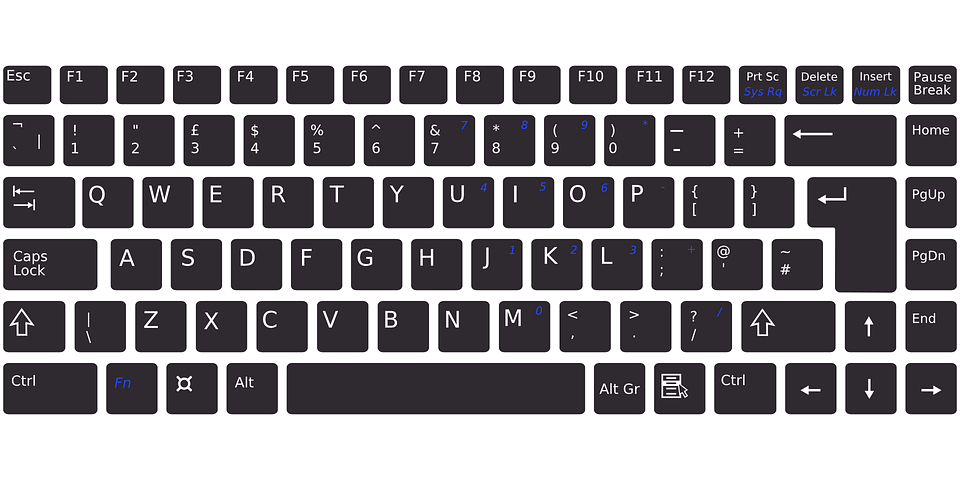Common Uses of F1-F12 keys in Windows
You may have been using Windows for a long time, but I am sure the majority of you are unaware of all the functionality and uses of the F1-F12 keys on your keyboard. We are all familiar with common shortcuts like as CTRL+C to copy and CTRL+V to paste, but you may be unaware of what the F1, F2, F3.......F12 keys truly perform and when and when to utilize them. In this blog , we will look at the common characteristics and uses of the F1-F12 keys, as well as how these keys may be used in combination with the CTRL and ALT keys.
F1-F12 keys in windows have a variety of applications mentioned below
Uses of F1 key
- F1 key almost everywhere is used for “Help”. if you are using windows OS and want help anywhere then press F1 key, this will open up help window for you.
- Sometimes F1 key is used to enter the BIOS(Basic Input Output System) by pressing F1 when your computer is about to boot.
- Combination of Win + F1 keys will open the “Help and Support" Microsoft Windows.
Uses of F2 key
- Rapidly rename the chosen file or folder. Works in all adaptations of Windows.
- Alt + Ctrl + F2 – Opens the Document as a Microsoft Word.
- Ctrl + F2 – Opens the Preview window in Microsoft Word.
- Frequently to enter the BIOS(Basic Input Output System).
Uses of F3 key
- Shift + F3 – Changes the content in Microsoft Word, from upper to lower case or capital letters at the start of each one expression.
- Win + F3 – Advanced Search window opens in Microsoft Outlook.
- In the MS-DOS charge line or in Windows, press F3 to rehash the last summon.
Uses of F4 key
- This opens the location bar, in the event that you press F4 in Windows Explorer and Internet Explorer.
- Rehash the last activity (MS Word )
- Ctrl + F4 – Closes the window open in the present window, for example, a tab in the program
- Alt + F4 – Closes the system window in Windows.
Uses of F5 Key
- Refreshes the present page (works in all advanced programs), and additionally redesign the desktop or open organizers in Windows.
- Running a slide demonstrate in PowerPoint.
Uses of F6 key
- Move the cursor in the location bar (additionally works in numerous advanced programs).
- Ctrl + Shift + F6 – opens Document in Microsoft Word
Use of F7 key
- Mostly used for spelling and grammar in a document programs Microsoft (Word, Outlook, etc.)
Use of F8 key
- Pressing F8 key while your PC is about to boot will result into booting your PC in Safe mode.
Use of F9 key
- The F9 key does not have any functionality in Windows. It may, however be used in some individual programs. To find out if it is available in the program you are using, bring up the program’s help screen and type in the words function key.
Uses of F10 key
- Activates “Menu” in the open organizer window.
- Shift + F10 – works same as the right mouse click.
- Pressing F10 while your system is booting will show you BIOS Information.
- F10 is used to enter the hidden recovery partition on computers Sony.
Use of F11 key
- F11 Key will take you to Full screen mode and it can be used and work in any Browser.
Uses of F12 key
- Opens the “Save As” in Microsoft Word.
- Shift + F12 – Saves a document in Microsoft Word.
- Ctrl + Shift + F12 – Prints a document in Microsoft Word.
- F12 key will open up Inspect element box in any Browser.
- Fn + F1 or F2 or …. F12 keys will normally do the task that is Printed on the respective keys, This is basically for Laptop Users
This concludes my list of F1-F12 key usage in Windows, if you know of any other uses, please add them to this blog by commenting below.
